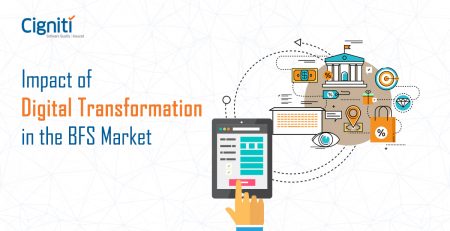Reshaping Syndicated Lending – A DLT Use Case
Blockchain technology (within the broader distributed ledger umbrella) has received a lot of eyeballs over the last decade, moving beyond the admiration of niche cryptocurrency fanatics and into the mainstream conversation of experts and investors, especially in the banking and financial services space.
Whether it is Payments, P&C (Property & casualty) claims to process in Insurance, Trade Finance, or post-trade settlement in Capital markets, there is a myriad of disruptive use cases being piloted collaboratively by big banks and financial institutions across the world.
The global blockchain technology market size is expected to reach USD 1,431.54 billion by 2030, growing at a CAGR of 85.9% from 2022 to 2030, according to a new report by Grand View Research, Inc.
As per allied market research, the BFSI share of the pie was valued at $277.1 million in 2018 and is projected to reach $22.46 billion by 2026, growing at a CAGR of 73.8% from 2019 to 2026.
This gives an idea of the monetary potential that Blockchain technology can generate globally.
Challenges
The global syndicated loan business is dependent on archaic back-office operations, administration & paperwork, tax rules and regulations across borders, transparency, and trust issues, and integration challenges between different members of the syndicate.
The result is a longer settlement duration, high overheads between different parties – banks, borrowers, agencies, regulatory bodies, and high expenses in terms of fees, intermediaries, and documentation charges.
Much of the challenge is due to the nature of the business.
Syndicated lending is a complex structure with hundreds of borrowers and lenders involved in a single project.
The secondary loan market is even more complicated, with lenders buying and selling loans via traditional fax machines with multiple agents on multiple loans.
Reconciling positions between borrowers, lenders, and loan agents is a nightmare due to operational inefficiencies.
Position breaks occur due to inconsistencies in record-keeping between the agent and those recorded by his lenders.
In all, this results in banks missing larger and higher revenue-generating syndicated deals due to the great manual effort and time required to execute these more complex deals.
Syndicated lending potential
While the syndicated lending market has been slow to join the technological revolution advancing other areas of banking, attitudes across the sector are rapidly catching up with current trends.
A recent Loan Market Association (LMA) study confirms that over sixty percent of surveyed members view fintech as an opportunity to transform critical areas of the syndicated lending process, such as document management and overall operations.
The Global syndicated loan business covers 40,000+ unique Borrowers across 200+ countries and 100 different currencies.
Global syndicated lending totaled a massive US$2.5 trillion during the first half of 2021, a 22% increase in total proceeds compared to the first half of 2020.
The global market is monopolized by larger players – with 50% of the global syndicated lending volume being managed by the Top 10 banks such as JP Morgan, Bank of America Merrill Lynch, Citi, Deutsche Bank, and Barclays, most of the players originating from from the US.
Pain points addressed by blockchain:
| Pain Points | Blockchain Benefits |
| Tampering with syndication lifecycle data | Immutable nature of the ledger |
| Lack of trust in rating Syndicate member banks | Creation of an Automated common framework using smart contracts |
| Slower decision making | Usage of smart contracts to automate Underwriting and due diligence process |
| Intermediaries slowing down administrative & documentation work | Automated event-based workflows using smart contracts to handle documentation and administrative work thereby eliminating intermediaries in the deal lifecycle |
| Lack of transparency in loan payments | Smart Contracts enable auto-disbursal of the principal & interest payment across the Syndicate member banks |
| Manual long drawn compliance verification | Automated Compliance checks for AML (anti-money laundering), Fraud, and PEP/Sanctions |
| Lack of data transparency in the syndicate | Real-time validation and verification of data by the syndicate participants before adding to the ledger |
| Disagreement between Syndicate stakeholders | Agreement among Syndicate stakeholders to transact with one another using consensus protocol |
| Limited data transparency between members | The decentralized nature of the database ensures sharing of deal-related information (Borrower’s financial info, KYC requirements, and Project details) are shared between syndicate members |
Blockchain technology or its broader DLT umbrella is not a panacea; instead, it should be viewed as one of many technologies that are part of a larger toolbox ((Biometrics Machine learning / predictive analytics Cognitive computing Quantum computing Distributed ledger technology Cloud computing Robotics) that will help in reshaping future financial services infrastructure.
Cigniti Solution:
At Cigniti, we gauge the depth of your Blockchain applications and help you derive the best possible ROI from the technology.
With our deep expertise in digital assurance & testing, we use the latest, competitive, and evolving technologies to help you bring efficiency & cost-effectiveness with easy adoption.
Accelerate Adoption: We look at how your blockchain application interacts with external factors such as network, users, transactions, & much more. This helps us leverage the technology platform to build a ‘realistic’ application for the users.
Process-Driven Development: We have established a Shift-Left approach with early test automation, performance testing, security testing, and service virtualization along with a SMAC stack with digital assurance services that offer enriched CX along with Risk-based testing using design failure modes, effects, and criticality analysis (FMECA).
Tool-agnostic set-up: Our IP-led expertise, robust operating models, & automation frameworks help clients achieve their business objectives by leveraging new technologies
Need help? Talk to our Blockchain Testing experts to learn more about reshaping syndicated lending and how Cigniti can help with making the blockchain compliant.





Leave a Reply